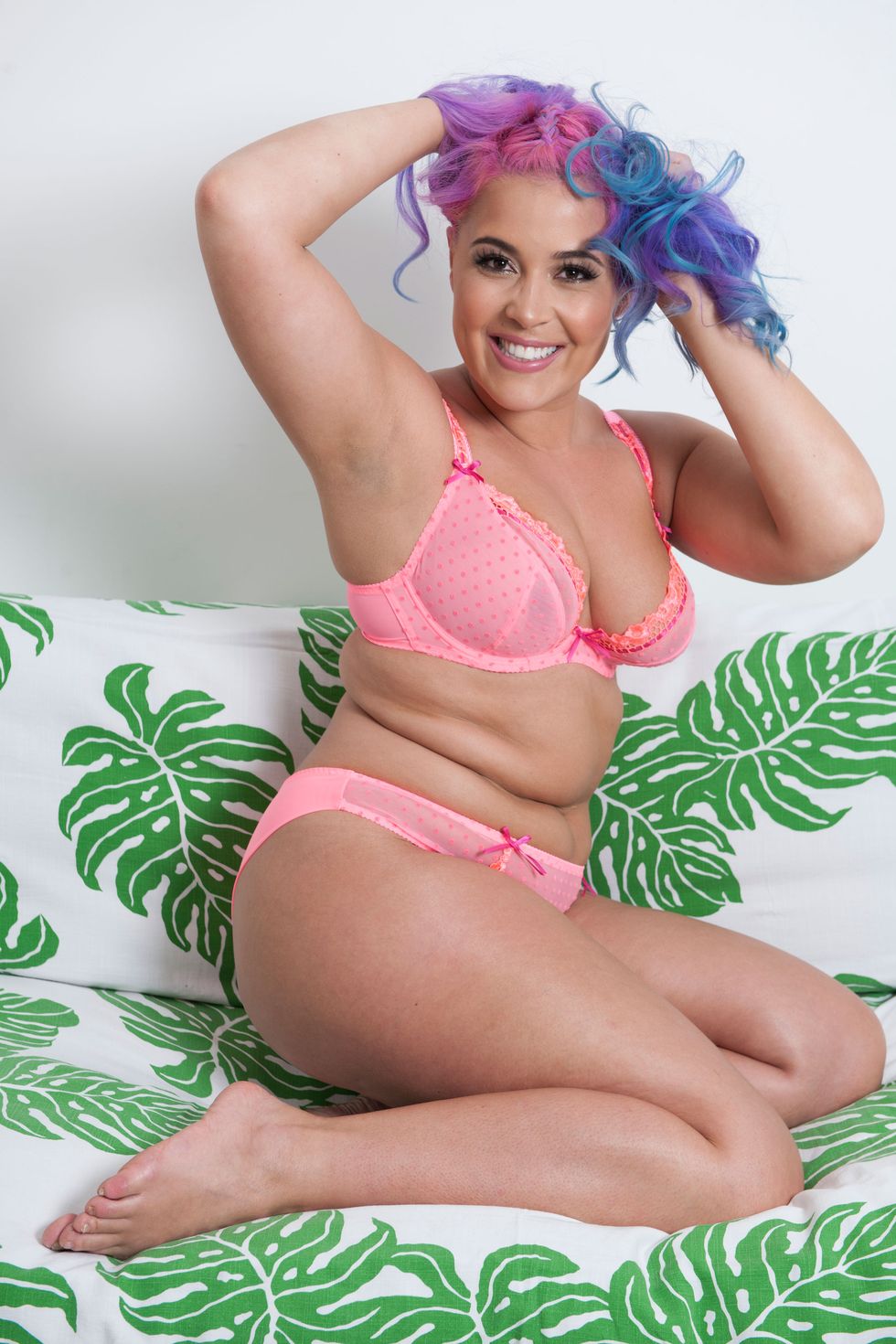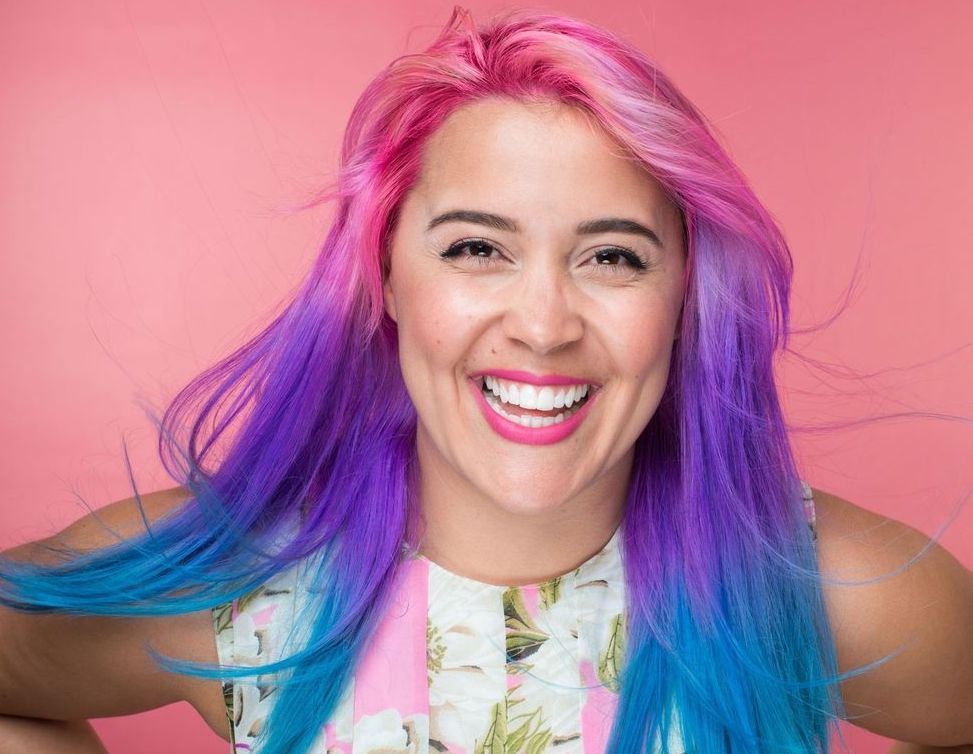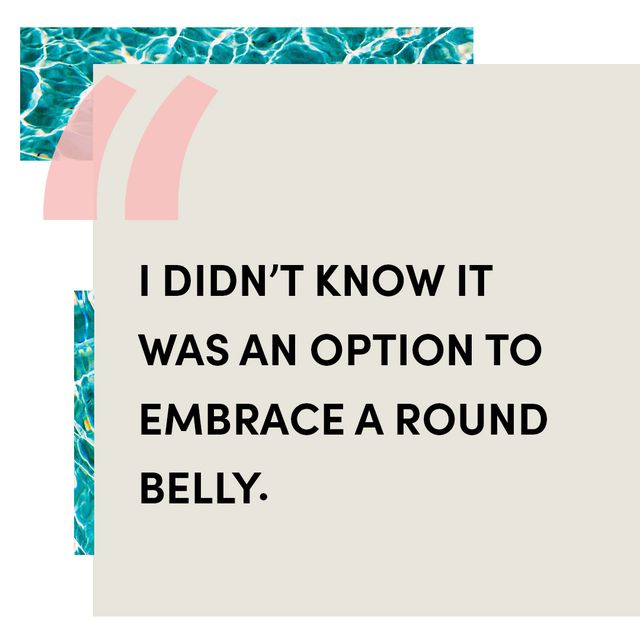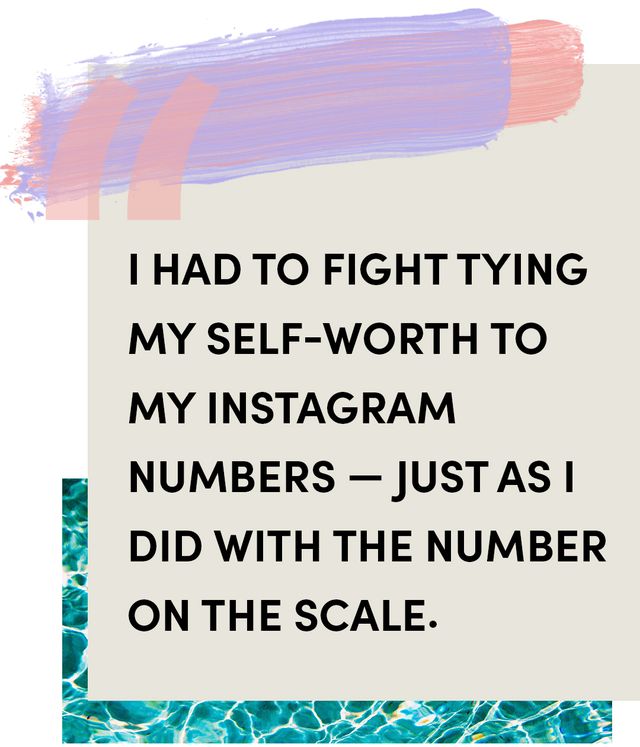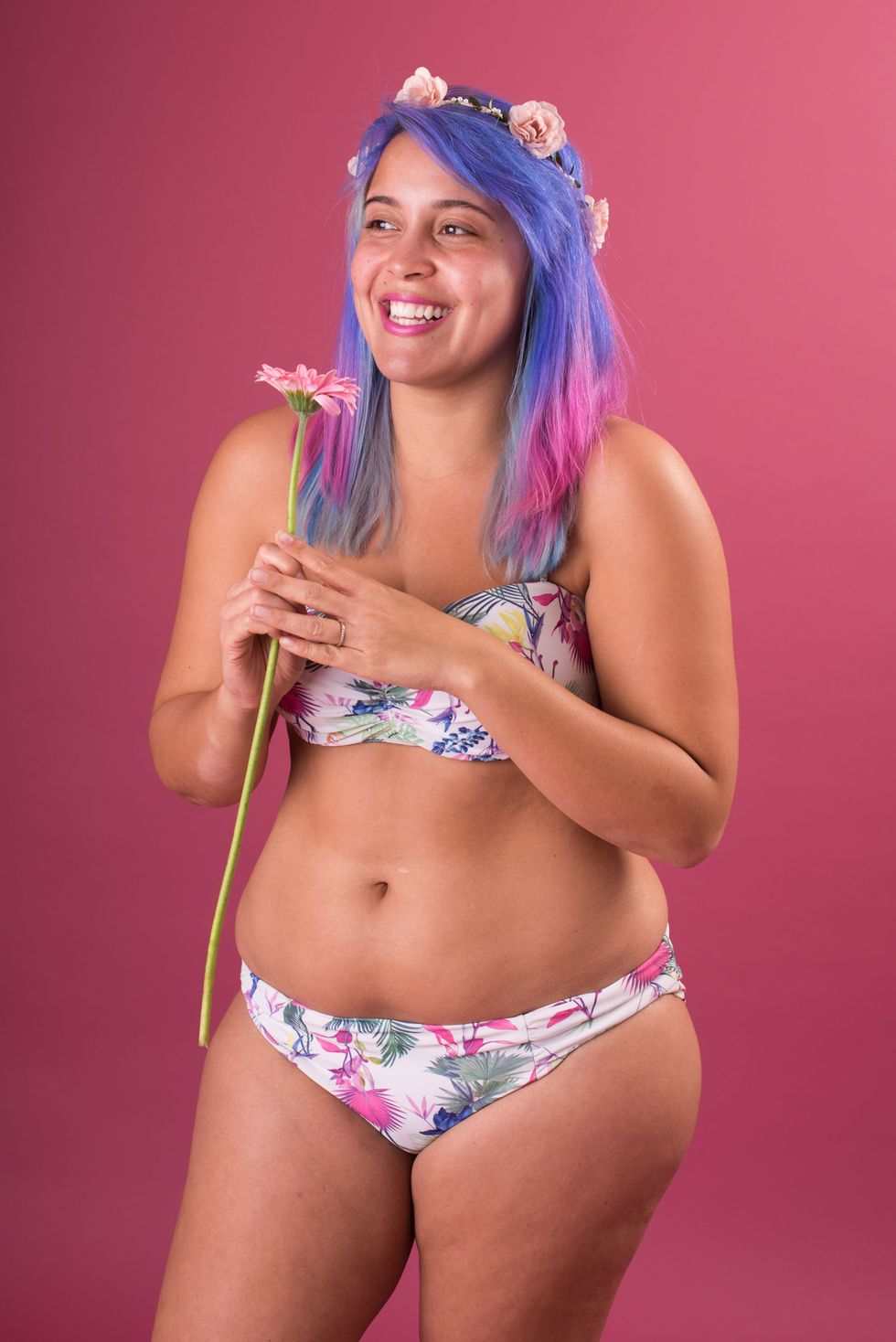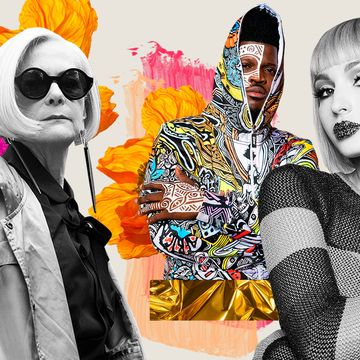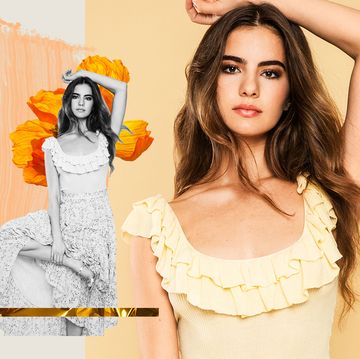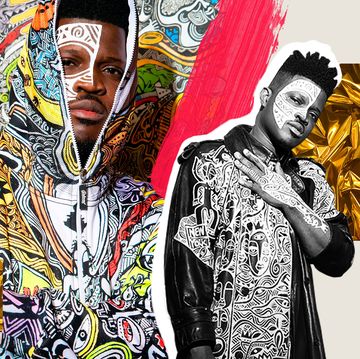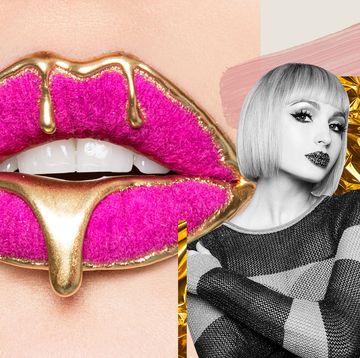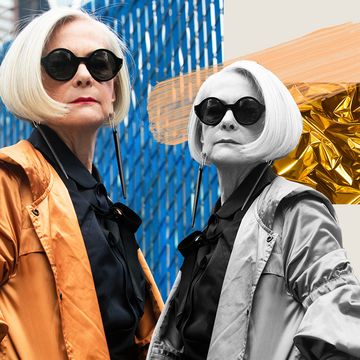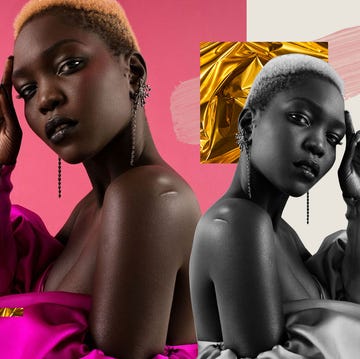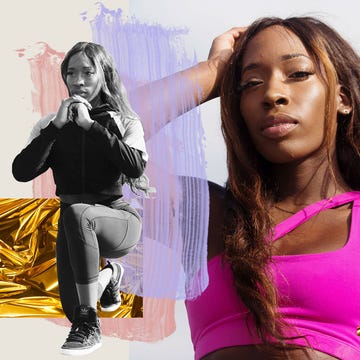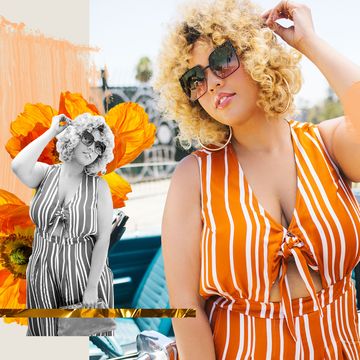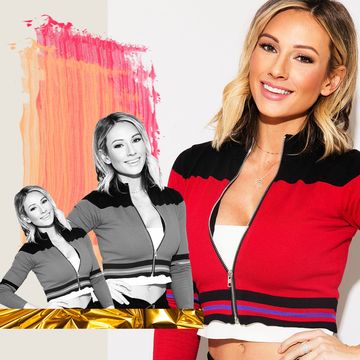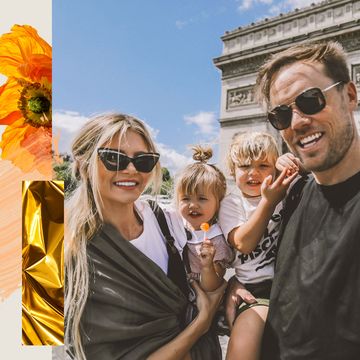When she was 16, Megan Crabbe began her recovery from a years-long battle with anorexia, and for the next five years, yo-yo dieting and exercise bulimia kept the Colchester, England, native from healing her relationship with her body. That’s when she discovered the #bopo movement on Instagram and decided to stop dieting forever — and never went back. Although @BodyPosiPanda’s journey to heal herself turned her into a body-positive influencer, amassing almost 900,000 followers and counting since 2014, she still felt pressured to be the perfect bopo activist for her followers. Here, Crabbe, who’s now 24 and recently released the book Body Positive Power, explains how she slowly let go of disordered eating while inspiring others to do the same.
I’m in my bedroom wearing only my underwear, scrutinizing the 100-plus photos I’ve taken of myself, from all different angles, over the past several hours. I’m searching for the perfect image to post — the one that makes me look the smallest. It’s been several months since I’ve launched my Instagram account, BodyPosiPanda, and I’ve noticed others in the body-positive community sharing photos of themselves in their underwear. I know if I do the same, it’ll be a big step toward body acceptance for me, but it’s taken me four months since I first got the idea — and encouraging DMs from other bopo influencers who I’ve become friends with — to finally feel like I have a safe enough space to post an underwear selfie.
Hours later, I finally share a picture: I’m topless and sitting on my bed with my back toward the camera, which hides my stomach. I’m terrified a commenter will call me fat — I tell myself that if someone does, I’ll delete my account, which has about 400 followers, and be done with the bopo community because it’s not for me.
I keep refreshing Instagram to make sure people aren’t commenting mean things — and nobody is. Plus, I’m getting supportive messages and comments from others in the body-positive community: 525 likes and 26 comments in total.
After that day in November 2014, posting photos got easier, and by the end of the year I’d shared belly-roll photos and full-length pictures of my body in a swimsuit. Just nine months earlier, weeks before I created BodyPosiPanda, I hit my breaking point and was on the verge of an eating-disorder relapse after five years of recovery. My dad and I sat on the couch, talking about how I was doing, which is something we did often. I started crying and told him that I didn’t see a way out of this cycle of bingeing and dieting. After everything he’d witnessed with my long, disordered relationship with food, he told me that he wanted me to find a peaceful place with food and my body, but he just didn’t know how I should do it.
A few weeks later, I sat on my living-room floor scrolling through Instagram looking for fitspiration after finishing a workout DVD and randomly came across Melissa Gibson (@YoursTruelyMelly), a woman from Louisville, Kentucky, who started posting about body positivity and fat acceptance after years of feeling less than beautiful due to her size.
For most of my life, I thought losing weight led to happiness, which eventually led to my eating disorder, so her message of self-love scared me. About a month after discovering @YoursTruelyMelly, I started following other body-positive influencers for more evidence that these people were truly happy with their bodies — at the time, I thought I could tell just by looking at their Instagram feeds.
While researching bopo accounts, I saw women of different shapes showing off their stomachs on Instagram. I was shocked. I didn’t know it was an option to embrace a round belly — and I certainly didn’t think it was possible for me to love mine if it wasn’t flat.
When I started @BodyPosiPanda, named for my love of pandas, in February 2014, I vowed never to diet again and used Instagram to stay accountable by becoming friends with others in the bopo community. They encouraged me to keep up the body-positive posts and to love myself just as I am. But at the time, I was still insecure: I wouldn’t load a picture if I didn’t think I looked good and I posed to make myself look better. I loved the message of body positivity, but I still had a hard time seeing my weight as a positive thing.
At first, I gained followers by teaming up with others in the bopo community to create community Instagram pages (like @pizzasisters4lyfe). We’d come up with weekly body-positive challenges, like sharing unflattering photos, and ask people to share their pics with the hashtag #pizzasisters4lyfe. Then, other community Instagram pages, like @effyourbeautystandards, started to repost content from my BodyPosiPanda page. In the summer of 2015, Metro Online wrote about one of my posts — a before-and-after of me severely underweight during my eating disorder and a current photo — and the story went viral.
I’ve always placed a lot of value in being liked by others. So when my following took off, I began to lose myself in creating content to please the new people coming to my account. I made an effort to keep my posts hyper-positive, because that’s what I thought people wanted. I had severe anxiety over feeling like I wasn’t intelligent enough or not liked and I felt inauthentic when I tried to power through by posting a smiling selfie or positive quote, which only made my anxiety worse. I also felt torn between sharing what I felt was watered-down bopo content, like quotes about loving yourself that please the masses, and the topics I’m passionate about but don’t get as many likes, like posts about including people in the body-positive community who have disabilities.
As BodyPosiPanda gained followers, I had to fight tying my self-worth to my number of followers, likes, and comments — just as I did with the number on the scale. I decided to experiment by posting content I thought was valuable but knew wouldn’t get many likes. After doing that a few times, I realized that posting less crowd-pleasing content didn’t affect my following in any way. Being inauthentic is more stress than it’s worth.
Since 2016, I’ve decided to be upfront about my real-life emotional struggles regardless of what people think, like when I posted about an anxiety attack in early 2017. And in the last year, I’ve made an effort to post even more content that feels genuine to me.
I feel fortunate to know that my account is helping people, and I get direct messages every day from people saying my account has helped them. One girl in recovery from anorexia messaged me to say that because of BodyPosiPanda, she ate cake on her birthday for the first time.
Although I wouldn’t be a bopo influencer if the positives didn’t outweigh the negatives, it can be isolating. I spend four to five hours a day coming up with posts, monitoring comments, and keeping up with everyone in my feed. On the days I get a lot of trolls saying things like I’m encouraging obesity, it feels like I’m one of the few people who believe in this message. When that happens, I reach out to some of the very first people I found in 2014, like @YoursTruleyMelly and @ChooseLifeWarrior. They’re some of my best friends in real life.
A while back, I was in a bad place mentally, and I reached out to Danielle (@ChooseLifeWarrior) for help. Not long after, she sent me a giant gift box with a book of uplifting quotes, some arts and crafts materials, a unicorn mug, and a supportive letter from her that I plan on keeping forever.
Like a lot of bopo activists, I don’t make money from my Instagram. I’ve been doing it on my own time while holding down a job as caretaker for my sister with cerebral palsy (whose care is covered by a court-appointed fund, so my salary is paid for through the fund), maintaining my social life, and taking care of my mental health. I’ve avoided ads on my page because I don’t want my followers to think I’m selling them things. But I’ve spent three years creating content for free, which isn’t sustainable. I want to make a career out of my social-media platform, so I’m open to working with companies whose beliefs align with my message, like ASOS, which has diverse models and inclusive sizes.
Healing from an eating disorder is a strange thing, because sometimes I think that I’m completely healed, and something will happen and I uncover a bit of pain from my past and have to deal with that. But after three years of BodyPosiPanda, it’s clear to me that I’m never going back to dieting.
If you or someone you know needs help, visit the National Eating Disorders Association (NEDA) website or contact the NEDA Information and Referral Helpline at 1-800-931-2237.
This Is the Woman Behind Those Mesmerizing Lip Photos You See on Instagram
I Was a Struggling Immigrant Artist. Then Beyoncé Called.
How a Struggling Single Mom Turned Beauty Blogging into a Six-Figure Career
This 64-Year-Old Professor Has More Instagram Followers Than Most Millennials
I Was Bullied for Being “Too Black.” Now I’m a Model.
There’s Someone Very Unexpected Behind One of Instagram's Sexiest Fitness Stars
Fashion Blogger Gabi Gregg: “It’s Political for a Fat Woman to Wear a Bikini or a Crop Top.”
How This Woman Went From Trailer Park to Instagram Queen
This Is What it Really Takes to Make it as an Influencer
This Is What it's Really Like to Be an Instagram Mom
This Badass Couple Makes a Living Swimming with Sharks and Taking Epic Underwater Photos
We Quit Our Jobs to Eat Around the World and Now Make Six Figures
How Obama’s White House Photographer Became an Unlikely Instagram Sensation
How Violetta Komyshan Handles Insta Trolls and Life Dating Ansel Elgort
Ashley Oerman is a contributing writer at Cosmopolitan, covering fitness, health, food, cocktails, and home. You can follow her on Instagram @AshleyOerman. She is pro-carbs.



